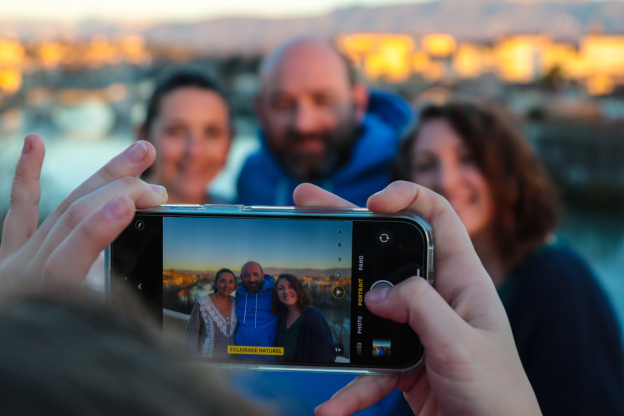
If you plan to stay longer in Norway, obtaining a local prepaid SIM card from Netcom or Telia could save money and help alleviate roaming rates charged by mobile networks. With these cards you can avoid expensive international data charges which otherwise would incur higher roaming rates and roaming rates.
Norway offers some of the most reliable 4G mobile data plans. Prepaid plans with durations spanning 7, 14 or 30 days allow you to enjoy fast internet without incurring an unexpected data bill. When selecting a mobile plan, it is essential to keep in mind how much data will be necessary and where you will use it.
Getting high-speed internet in Norway doesn’t need to be costly if you use a prepaid SIM card, available at most grocery and convenience stores throughout Norway and compatible with traditional European frequencies, offering free trial periods valid for multiple trips.
Assembling a Norwegian SIM card is simple and fast. You can purchase one at phone kiosks, electronic merchants or most supermarkets and convenience stores across Norway – not forgetting Bergen (BGO), Oslo (OSL) and Stavanger (SVG) airports where SIMs can also be purchased – remember your passport or ID when purchasing!
According to this site, Norway boasts excellent cell network coverage, even in remote mountainous and coastal regions. WiFi can be found widely throughout public spaces – restaurants and hotels among them – while several buses, trains, ferries, airport shuttles as well as most airlines provide complimentary WiFi services as do many tourist attractions and museums.
It’s vital that you choose a network offering both Voice over LTE (VoLTE) and VoWiFi services; such services are usually found in hotels, department stores, or cafes. Be mindful that public WiFi networks may be susceptible to hacking attacks that could compromise your security.
eSIM cards offer flexible mobile plans in Norway that are quickly purchased online and activated instantly, compatible with most devices and offering up to 5 GB or unlimited data depending on which plan is chosen. Unlike traditional SIMs which can only be used once on one device at once; with multiple eSIMs being managed through your device’s app.
Outside of choosing a provider and plan, it is also crucial to monitor your usage. Most providers offer apps or online portals which allow you to keep an eye on this. International roaming fees can become quite costly without an affordable plan – to prevent this scenario you could purchase either a local prepaid plan or obtain an international sim card from European providers, like one of the ones below.

Telenor
Mobile networks can be an important way to stay in contact with loved ones while traveling abroad, providing calls, text messages, social media updates, and navigation assistance in a new country. Finding the ideal plan may prove challenging if you’re unfamiliar with Norway’s telecom market; three providers stand out: Telenor, Telia, and Ice offer robust infrastructures as well as flexible plans tailored specifically to different traveler needs.
Telenor is Norway’s largest telecom company and boasts an illustrious history in Norway. Their service is reliable and coverage comprehensive; although their prices may be more expensive than some competitors. Their prepaid plans offer generous data limits and unlimited SMS usage; additionally they have additional services like international calls and data boosters available as add-on services.

Telia
Telia provides mobile plans tailored to suit both budgets and needs, offering great coverage at great value for your money. Plus, Telia features many exclusive add-ons designed to improve user experience – making them a top pick among both consumers and businesses alike. In addition, fixed wireless access (FWA) and fiber broadband services help close digital divides in Norway while increasing productivity.
Telia offers one of Estonia’s premier networks, covering 98% of the population with high speed connections that are continuously upgraded with cutting-edge technologies. Telia also boasts a rapidly expanding fiber broadband footprint in Norway; 5G technology deployment and fixed wireless access (FWA) investments to extend coverage into remote areas are ongoing investments for Telia.
Telia operates not only a mobile network in Norway, but also cable television and broadband infrastructure using CableLabs DOCSIS 3.1 technology – offering faster speeds with better reliability than traditional cable. Telia’s investments in its broadband infrastructure are helping more Norwegians gain access to digital content while improving digital experiences for existing customers.
Telia boasts second place when it comes to popularity among subscribers in terms of coverage – even surpassing Telenor in certain tests! Before purchasing a SIM card from Telia or any other network provider, be sure to test compatibility between your device and network through Will My Phone Work or Kimovil websites, both offering databases of frequencies by region.

Ice
Norway is home to three major providers with reliable networks and extensive coverage. Each one offers mobile plans tailored to different budgets, accommodating both heavy data users and those wanting to maximize prepaid allowances. Each provides add-ons that make customizing plans simple.
Ice has the best network coverage, boasting impressive 4G speeds across most of Norway. Their mobile plans are highly affordable and include packages with unlimited data usage – they even offer discounts for heavy data users! Their eSIM option enables customers to purchase an eSIM ahead of time and activate it directly from their smartphone, saving time and hassle.
Ice offers excellent coverage across Norway, although their network may be less reliable in rural locations. Their eSIM option enables users to purchase an eSIM in advance, and plans offer generous data allowances and add-on options. They also boast an outstanding customer service team as well as being reliable and cost effective.
Netcom
Netcom offers fantastic prepaid plans tailored specifically to visitors, starting with their small plan which costs NOK 299 and offers talk time, free SMS messages and 1GB of 4G speed data – as well as the option of adding additional GB at an affordable price. Although this plan will expire after one week, you may extend it by paying an additional nominal fee.
This company is another great MVNO choice for visitors to Norway, using Telia’s network and offering 2G, 4G/LTE and 5G NR services without incurring surcharges in Europe, EEA or UK roaming regulations without surcharges – more information can be found on their website; packages auto-renew as long as you have credit in your account unless stopped manually or by contacting your provider.
Norwegian mobile network operators like Netcom have implemented the European “roam like home” rules, introduced in June 2017; this generally means you can use your domestic data allowance while in Norway at domestic rates; however, some providers may still impose an EU/EEA roaming cap; please see European Union article for more details.

MVNOs
The mobile telecom sector plays a pivotal role in our economy by connecting people, fostering communication, and driving digital innovation. Competition between operators is vital in terms of reducing prices, expanding network coverage and offering innovative services – such as 4G/5G. Having mobile virtual network operators present promotes creative services while offering consumers more choice of operator.
Norway boasts more than 15 Mobile Virtual Network Operators (MVNOs), each offering their own set of services and products. Some offer low-cost mobilabonnement or plans while others provide comprehensive offerings with value added offerings. Many MVNOs utilize the network infrastructure of traditional operators while others operate virtual networks without purchasing radio spectrum in order to lower costs and expand market share.
MVNOs provide more than just mobile voice and data services – they also provide international roaming, video calling and messaging as well as discounted or even free smartphones – something which may appeal to users looking for affordable mobile solutions.
MVNOs can offer cheaper plans than traditional network carriers as they do not need to cover costs associated with maintaining and supporting their own networks and towers. These providers tend to utilize lower-cost smartphones with more features than their rivals.
One of the primary challenges for mobile virtual network operators (MVNOs) is managing the costs associated with providing services. Network providers may impose pricing structures that make providing 3G services uneconomic. They might charge monopoly prices for accessing their 3G facilities – known as vertical integration – which has an adverse impact on competition.
Norwegian authorities have introduced several market reforms in order to increase competition, leading to improved service quality and lower prices. Their regulator has implemented rules which foster fair competition among network providers as well as lead to greater investment in this industry. Sadly, fixed telephone subscriptions in Norway have steadily declined since 2000 while more people use mobile technology than fixed lines for communication purposes.



